|
False allegations of copyright infringement against DMS and Juerg Tschumperlin have been
distributed for over 4 years. This
section provides the relevant facts surrounding these false allegations.
The false allegations
In 2008, the New Zealand Ministry of Education/Education Sector created the
“ESDM Review Report”.
The 2008 Report existed in two versions, draft 0.1, and 1.0 (not marked as
draft).
Both versions contain
identical statements relating to the MXV tools developed by Juerg Tschumperlin of Data
Management Solutions (DMS), alleging that the Ministry
“disputes DMS’s claim to the IP” of MXV, and recommending that the
Ministry “obtain documentation” (i.e. the source code) “to maintain" MXV.
These statements,
released under the Official Information Act, were incorrect.
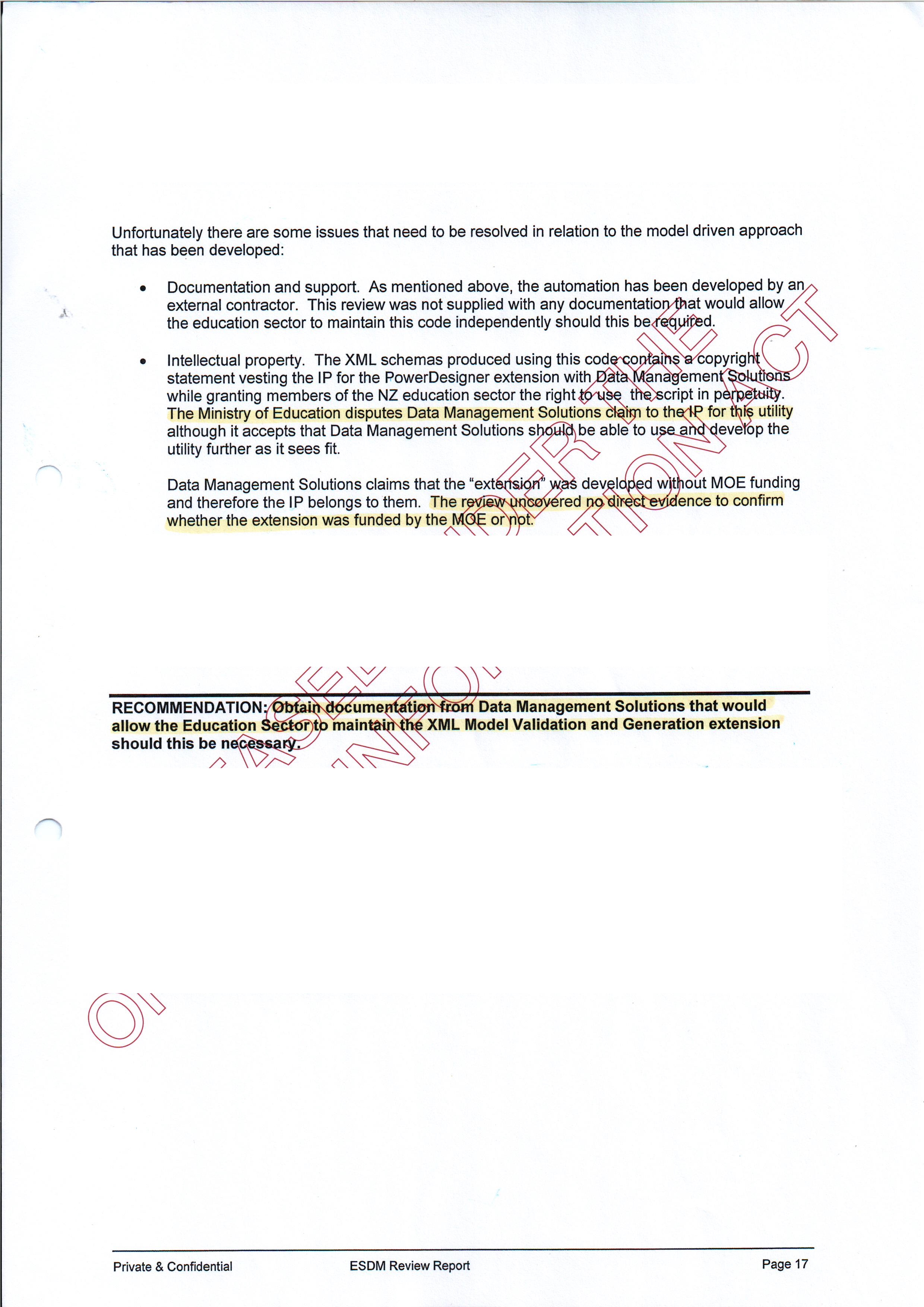
The first amicable mitigation attempt
failed
In 2010 Juerg Tschumperlin became aware of the false allegations made about DMS
and immediately alerted the Ministry to the errors. At the same time, Ministry
staff directly involved with MXV also got hold of the Report for the first time. The Ministry accepted the allegations were false, apologised
to Juerg Tschumperlin, and promised to have the offending passages in the Report
removed. This did not occur, was not followed up by the Ministry, and the Report
containing the same false allegations continued to be distributed between 2010
and 2012 reaching third parties outside the Education Sector,
including a government client of DMS, a private sector business consulting to a range of
government agencies and a private sector software company. In 2012 DMS became aware of these latest distributions and
sought legal advice.
The second mitigation attempt is cause
for concern
DMS requested information from various government agencies under the
New Zealand Official Information Act (OIA) to establish the facts surrounding the creation
and distribution of these false allegations.
An OIA response from the Ministry of Education identifies Mr John Fisher, Enterprise Architect at the
Ministry of Education, as being the lead with overall responsibility for the Report,
including the provision of information and approval of the Report:
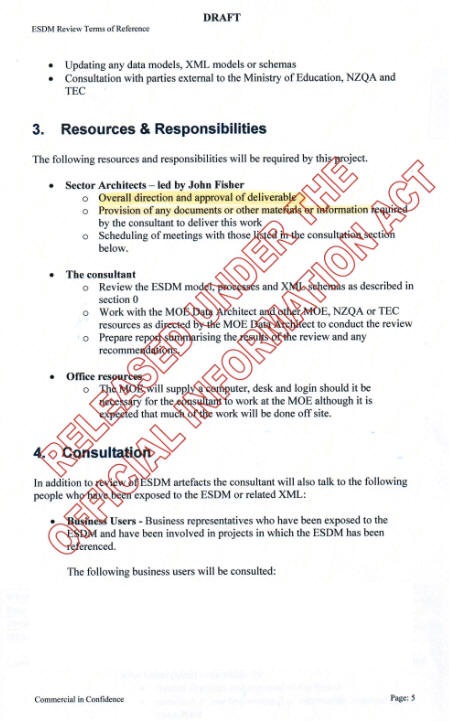
A further OIA response identifies Mr Paul Fernyhough, now Manager
at Wellington based management and technology consulting firm Tenzing Limited as the author of the
Report:
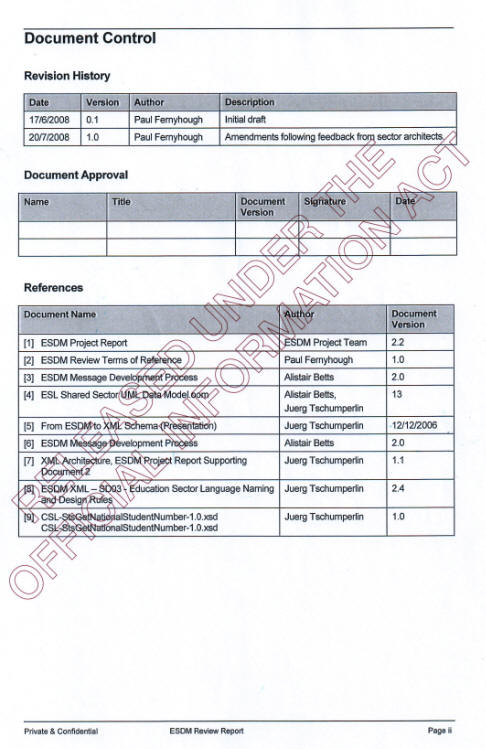
Over the 8 month period prior the Report being created, DMS has sent
extensive email communications to the Ministry about MXV. These emails included
the initial idea and DMS's proposal to develop MXV without any obligation for
the Ministry, updates on development progress, details on free trial licensing,
software trial outcomes and the Ministry's decision to purchase MXV licenses. Mr John Fisher received these
email communications also.
The Ministry's position:

To date, it appears no individual is being held accountable for the false
allegations against DMS to have been made, or to allow their publication.
In 2014, six years after the false allegations were made, and after
more than 18 months of legal advice, a settlement has been reached
between DMS and the Ministry of Education.
The Ministry acknowledges that the allegations should not have been made
given the written communications that existed at the time the Report was
created.
The Ministry unreservedly accepts that the allegations contained in the
Report are incorrect and confirms that it never had an intellectual property
dispute with DMS or Mr Tschumperlin. It has, once again, apologised to DMS for
its failure to remove the allegations from the Report and delete earlier
versions as it promised to do in 2010. The Ministry has removed the offending
passages in the Report version 2.0 and deleted prior versions from its system in
2012.
The settlement includes a
corrective statement intended to reach the Report's recipients. Due to the Ministry
not being able to determine all recipients of the Report, the Ministry has sent
a corrective statement to possible recipients
with the request to delete those versions of the
Report and to name and forward the corrective statement to secondary recipients.
One of the Ministry's obligations was to obtain written responses.
It is however likely that these allegations have reached some people who
remain unaware that the Ministry has retracted these false allegations.
This document intends to reach such individuals and to present the situation.
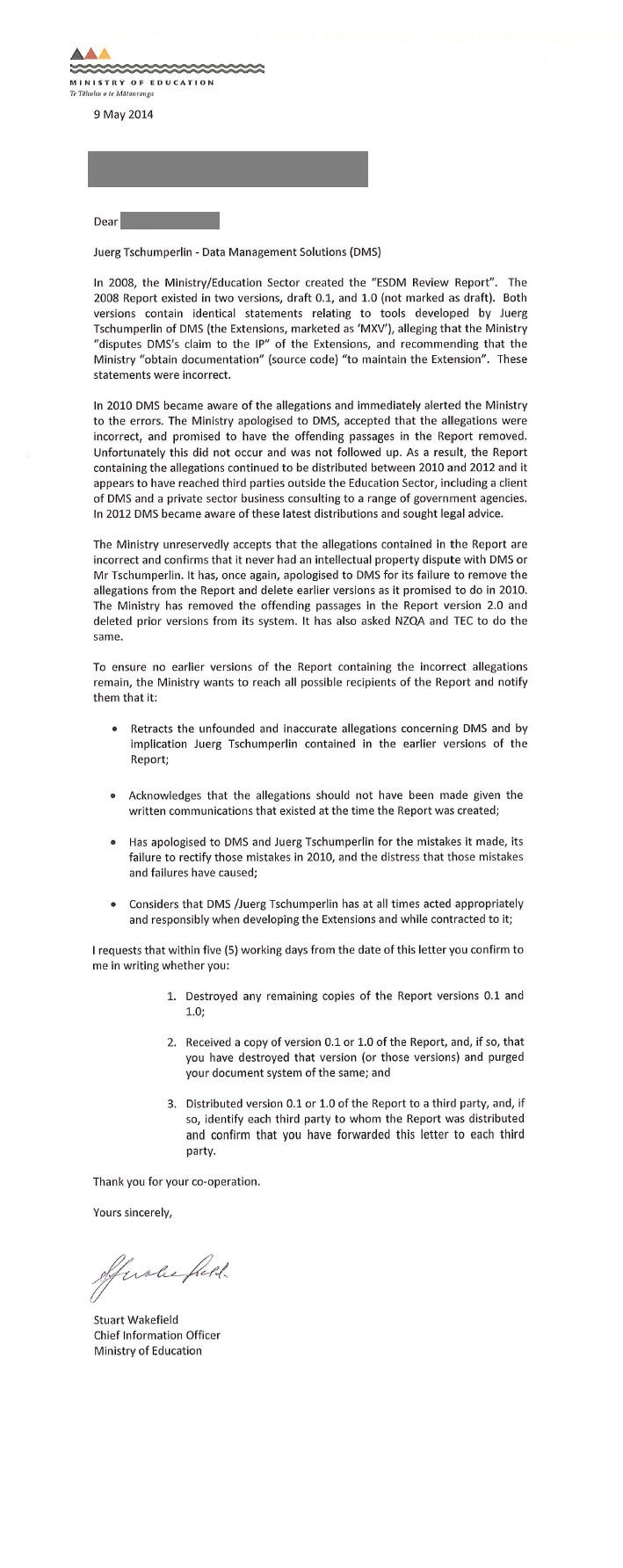
However, DMS has cause for concern in relation to the following third party responses to the Ministry's above request:
1. Ministry of Social Development (MSD)
MSD has not agreed to provide a written response.
2. Tertiary Education Commission (TEC)
TEC states it found a copy of the Report in 2014:
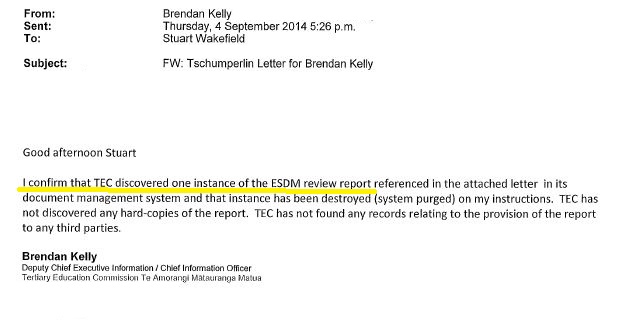
The Ministry has
asked TEC to remove this Report on two previous occasions.
First, in 2010, and again in 2012. It
appears the Ministry’s requests have been ignored by TEC and the Report
continued to be held at TEC until 2014. This
demonstrates that for four years the Ministry has been unable to manage the
deletion of this Report within the Education Sector.
3. New Zealand Qualifications Authority (NZQA)
NZQA states "it did not find any evidence of further distributions to third
parties":
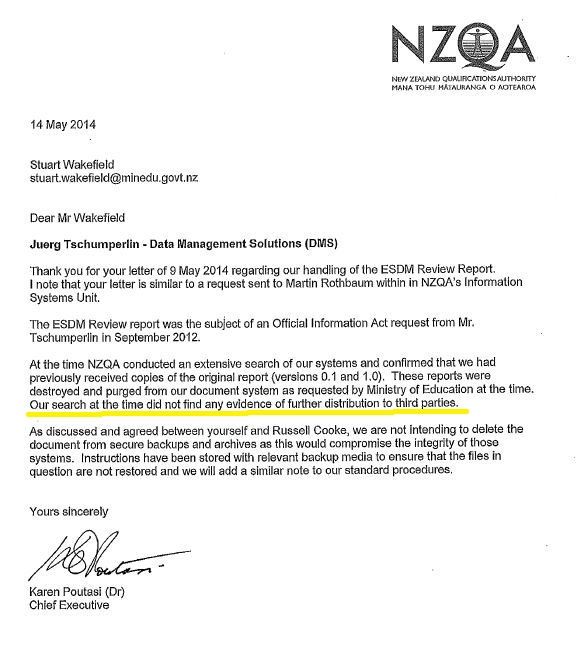
NZQA has not explained a document DMS has obtained from the Tertiary Education
Commission (TEC) showing that NZQA's Mr Martin L Rothbaum, signing as MLR, has
emailed the defamatory Report to Mr Leon Bakker's Blackberry, who forwarded
it to an unnamed recipient at TEC in 2011. The Report which has a "Private
and Confidential" classification has been sent to this
contractor's private phone.
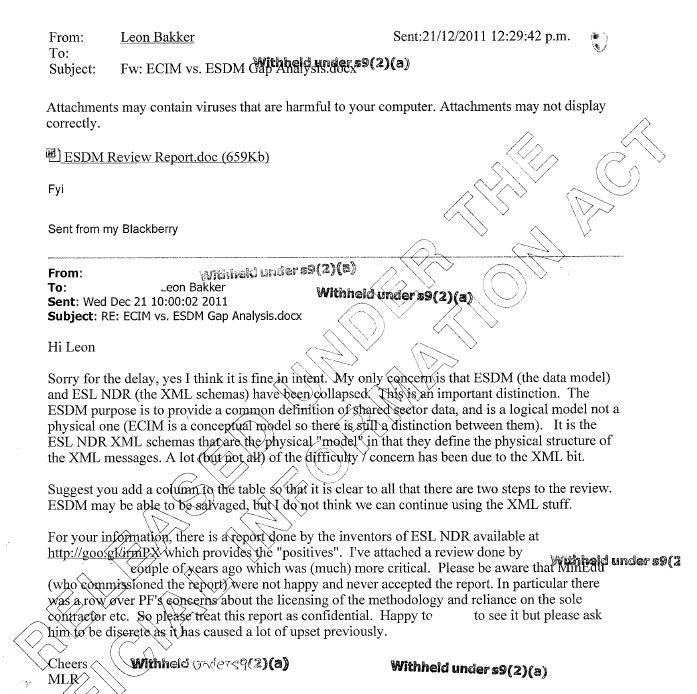
4. Mr Leon Bakker
Mr Leon Bakker
states he did not send the Report from his personal systems:

Mr Bakker,
a private sector consultant contractor, has not explained
a document obtained under the OIA:
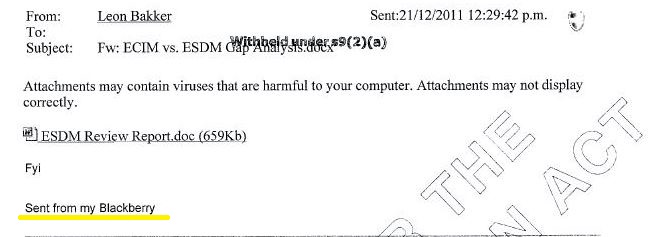
5. Inland Revenue Department
The Inland Revenue Department does not confirm whether it has forwarded the
Report:
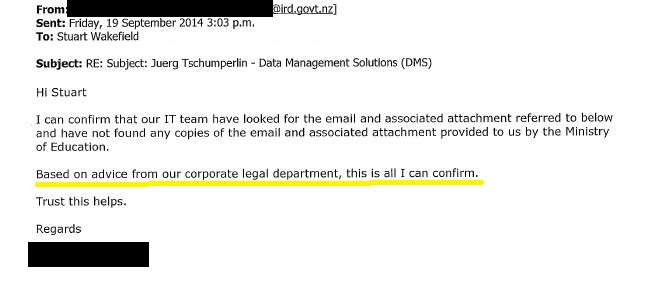
The Inland Revenue Department's
position makes it impossible to trace further publications of the false allegations.
The Ministry of Education is of the view that it has met its
obligations. DMS however is left wondering how the above responses, which appear either
evasive or inconsistent with the documents presented, can be seen as responses
in good faith.
The following points are worth noting:
-
The ESDM Review
Report containing the false allegations has been created in 2008 by people
in business units with whom Juerg Tschumperlin of DMS never had a direct or
indirect reporting line.
-
Those managers at
the Ministry of Education, who were responsible for Juerg Tschumperlin's
contract, statements of work and time sheets, have not been consulted when
the Report was created.
-
The Report was
distributed for two years without the knowledge of Juerg Tschumperlin's
managers, who rejected the allegations when they became aware of them in
2010.
-
Juerg Tschumperlin
would like to thank his then managers and team members for the great working
relationship, in particular the Student Management Systems team and the
Shared Sector Services team. Their corroboration of Juerg Tschumperlin's
evidence of no wrongdoing is much appreciated, even if it could not stop the continued distribution of
these allegations by others.
-
On 19th
December 2014 the Ministry of Education met its financial obligations of the
settlement agreement by making the final payment.
-
Six and a
half years after the
Ministry of Education and others started to distribute these false allegations
across several government agencies and private sector businesses, it is
time for DMS to move on. It is left to the reader to form an opinion on this
matter and learn from it.
|


![]() © Copyright 2014 Data Management Solutions, Wellington, New Zealand
Last Update: 2014 December 20
© Copyright 2014 Data Management Solutions, Wellington, New Zealand
Last Update: 2014 December 20